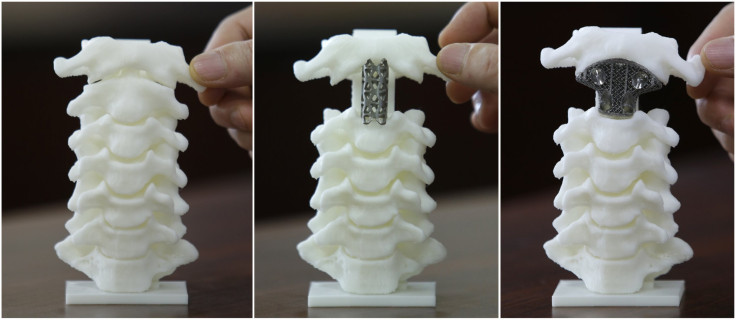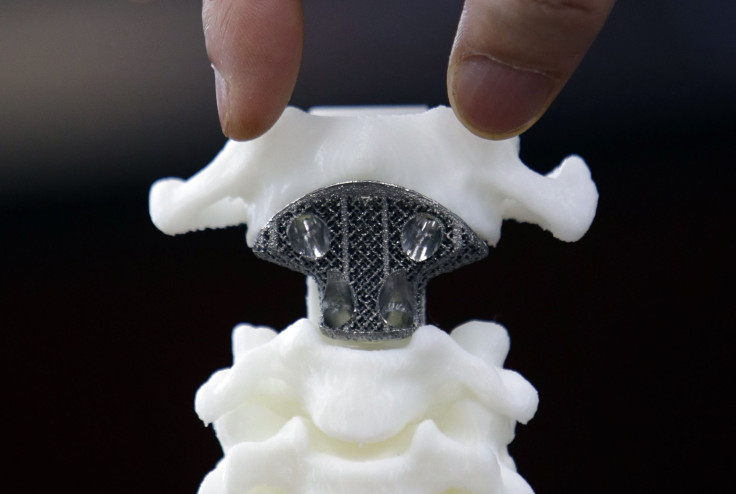3D-Printed Vertebra Gives Bone Cancer Patient Stronger Alternative To Titanium

A 12-year-old bone cancer patient named Minghao was recently the first recipient of a new, 3D-printed vertebra in the top of his spine. The Aug. 18 surgery took place at Peking University, where surgeons cut out the cancerous mass and replaced it with a durable artificial replacement.
3D printing is quickly becoming the innovating surgeon’s leading means of repair. Tiny blood vessels all the way up to entire portions of a human face can now be produced with little more than a digital scan and some new-age materials. As the field grows, scientists are beginning to feel more confident with doctors implanting these devices regularly, and not just in the lab but in the operating room.
Using traditional methods, doctors would have had to prop up Minghao’s head with stabilizing pins, Dr. Liu Zhongjun, the director of orthopedics at No. 3 Hospital, Peking University, told Reuters. "But with 3D printing technology, we can simulate the shape of the vertebra, which is much stronger and more convenient than traditional methods."

Doctors first spotted the tumor after an injury Minghao sustained while playing soccer. According to his mother, the boy went up for a header during one of his games and came down complaining of a neck injury. Later tests confirmed the tumor’s presence.
Minghao could barely stand, let alone walk, prior to his five-hour surgery; he lay in the hospital’s orthopedics ward for two months. As Liu told Reuters, standard protocol for a vertebra replacement calls for a hollow titanium tube. The problem with this method is it takes time. Minghao’s head wouldn’t be able to touch the pillow for three months, in order to keep the tube sturdy.

The new vertebra spans the entire width of his spine, as opposed to the tube thinly bisecting it through the center. His recovery will still take time, doctors say. Five days after his surgery he continued to have trouble writing and couldn’t speak. He is on the path toward recovery, however, and doctors suspect he’ll make a full return to health.
Like normal vertebrae, the 3D model allows room for nerves to be threaded through and carries enough strength to support the bone that sits on top of it. With the advanced technology, Minghao’s recovery will be shorter and hopefully less inconvenient.
Late last month, doctors broke new ground when they gave a 6-year-old a 3D-printed prosthetic arm. And in March, a surgical team implanted 3D-printed windpipes splints to help a baby with a condition known as tracheomalacia, in which the boy’s windpipe collapses under minimal stress, breathe new life back into his lungs. Dr. Glenn Green, who co-designed the implant, said at the time his team’s project was only a week-old when it saw surgical use.
“It had worked just the way we had hoped,” he told NPR. “I said, 'This is going to change this boy's life and his family's life forever.'"
Published by Medicaldaily.com



























